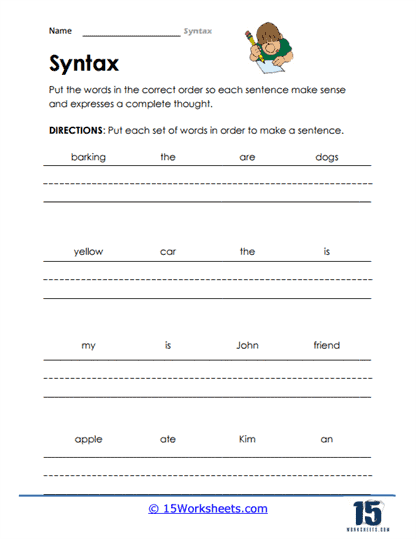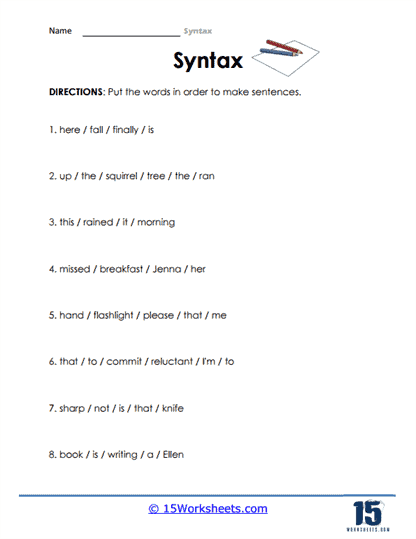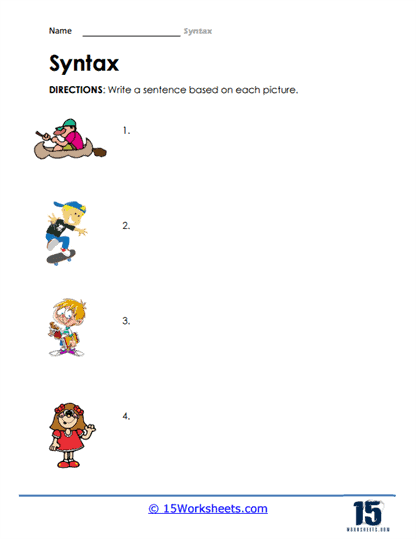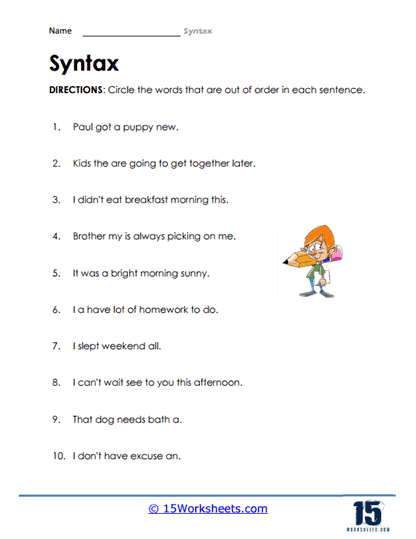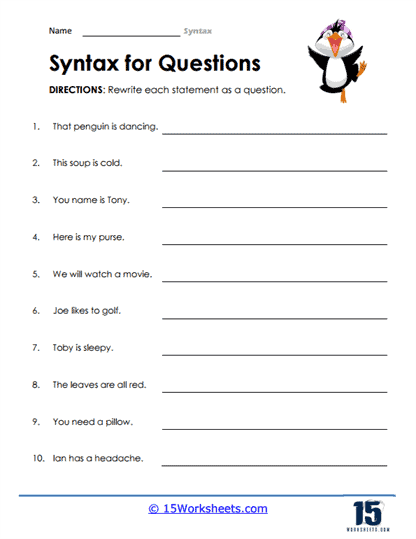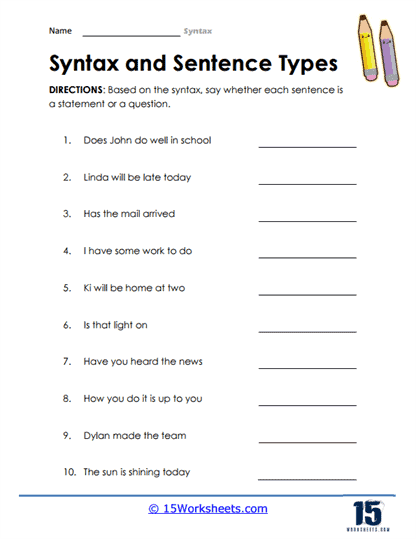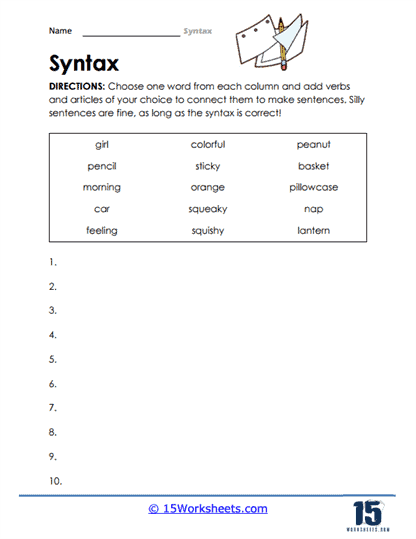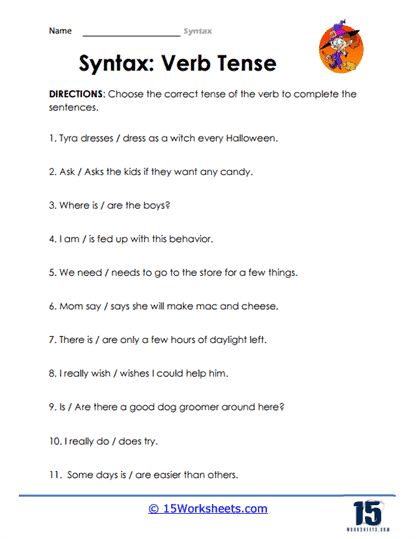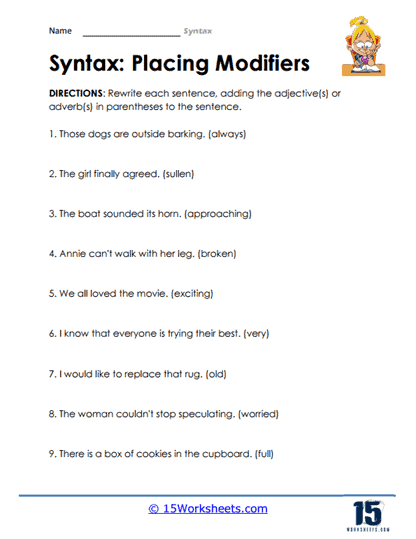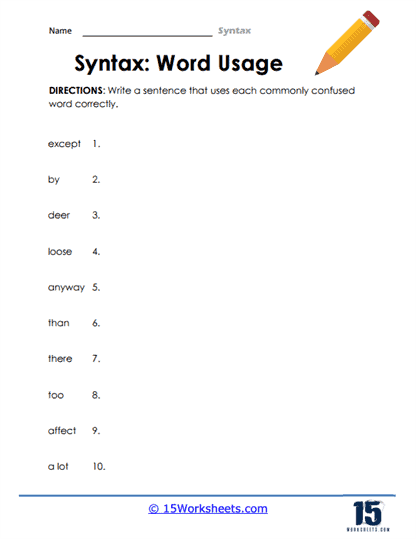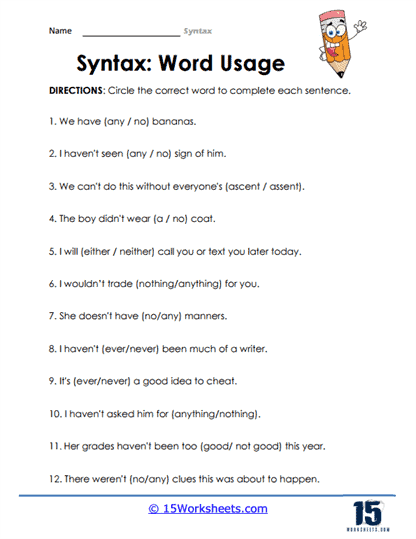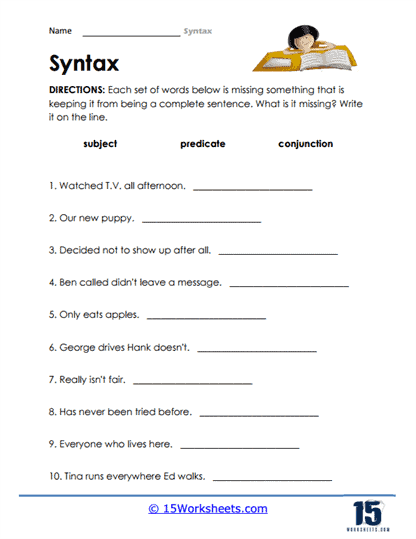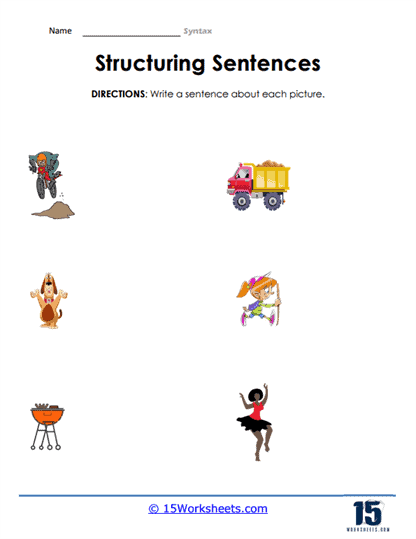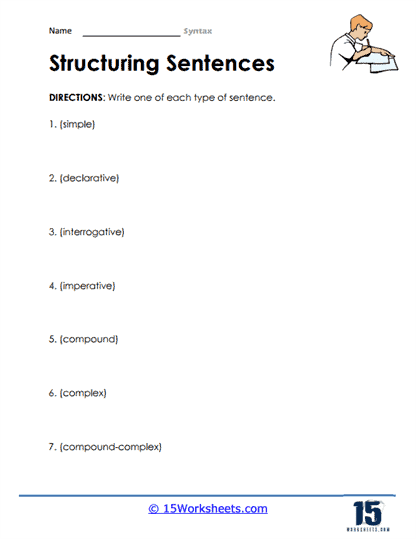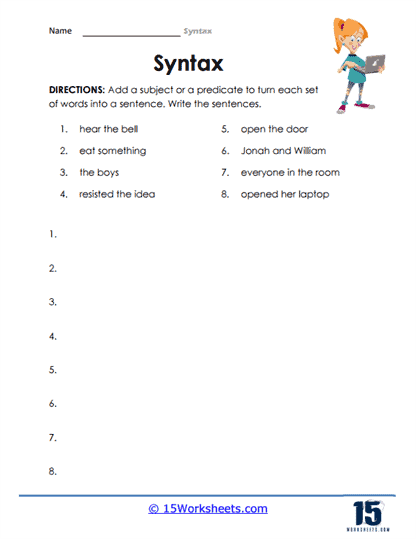Syntax Worksheets
All About These 15 Worksheets
This collection of free worksheets can help students understand the rules and patterns that govern the structure of sentences in English grammar. Syntax refers to the way words are ordered and combined to form sentences.
These worksheets include exercises and prompts that encourage them to analyze sentences and identify the different elements of syntax. These could include activities that require students to re-organize given words to form a sentence that expresses a complete thought, short writing prompts, rewriting exercises, and more. Through these worksheets, students will:
- Be familiar with grammar rules to create their own sentences that reflect correct usage of words or different parts of speech;
- Create their own creative yet grammatically correct sentences;
- Spot grammatical errors in sentences;
- Determine sentence types and be able to transform one type to another and vice versa;
- Complete sentences by supplying them with the word or part of speech that makes them correct and coherent;
- Write their own sentences using commonly confused words in English grammar;
- And identify what makes a sentence complete.
By providing students with a range of exercises and engaging prompts, these worksheets can help them develop their understanding of syntax and improve their ability to construct grammatically correct sentences. This, in turn, can enhance their writing and communication skills, as well as their overall proficiency in English.
What is Syntax and why does it matter?
Syntax in English grammar refers to the rules and patterns that govern the structure of sentences. It includes the way words are ordered, combined, and related to one another to create meaning. Syntax is an essential aspect of language as it allows us to convey complex ideas and communicate effectively. Syntax is an important topic in English grammar for students to learn and master for several reasons:
- Clear communication – Understanding syntax allows students to communicate their ideas clearly and effectively. When students understand how to structure sentences correctly, they can avoid confusion and ensure that their message is understood.
- Writing skills – Knowing syntax is essential for writing effectively. Students who understand syntax can create well-structured sentences, which are necessary for writing cohesive paragraphs and essays.
- Comprehension – Knowing syntax is important for understanding the meaning of what others say or write. Students who understand syntax can identify the relationships between words and phrases in a sentence, allowing them to comprehend the meaning more easily.
- Standard English – Syntax is a critical aspect of standard English. Learning the correct syntax helps students to develop proficiency in the language and communicate effectively with others.
Overall, syntax is an essential component of English grammar that students need to understand to communicate effectively, develop their writing skills, and comprehend the language.
How Does Varying Syntax Create an Effect?
The normal sentence pattern in English is the Subject-Verb-Direct Object, such as who the Subject did the Verb to. The sequence of the components of speech within a sentence, or the syntax, should be varied whenever possible when writing. Using the same type of grammar will make the text sound stale. Your paragraphs will sound monotonous because your sentences will all be roughly the same length. Your writing will have more depth, texture, and lasting effect if you vary your syntax.
Most sentences begin with S-V-DO due to the peculiarities of English grammar. For instance, Aunt Janie sews the button on my shirt, in which Aunt Janie is the Subject (or who the phrase is about), sew is the Verb (what the Noun did), and the button on my shirt is the Direct Object.
Note that using modifiers in various parts of the sentence might add interest to the content. You can easily tell if a piece of writing lacks diversity by paying attention to how each sentence begins. When beginning sentences, writers typically employ the same term, such as their name or a subject. A lack of variety in topics might be a turnoff for readers.
The following are the ways using which varying syntax can create an effect:
By Indulging in the Joys of Simple Language
Your second sentence should be simple if your first sentence is a complex compound sentence with several clauses. When sentences are kept to the bare minimum and are free of ambiguous language, they impact the reader more. Ernest Hemingway and Judy Blume are two of the most famous short-sentence writers in the history of literature. A good rule of thumb is to use short, unambiguous sentences whenever possible.
By Using Simple Sentences after Complex Sentences
A compound-complex sentence has at least two independent clauses and one dependent clause. It is also referred to as a dense sentence. Complicated sentences can add an authentic touch to a written piece; however, repeating them can get old fast. A different sentence should be used after the first one you write.
Make Use of Rhetorical Questions
Statements posed as questions to get the reader thinking are known as rhetorical questions. The question “What if you were a bird?” can be counted as a rhetorical question. These sentences can be used in both creative and non-creative contexts. It’s important to know when and how to apply them properly to keep the reader hooked.
By Convey Meaning
One sentence can be varied in numerous ways to produce new grammatically correct and engaging sentences. Changing the syntax of a sentence can change the mood and tone of a piece of writing, even if the meaning remains the same.
However, you can experiment with your grammatical structure to give your writing a more creative flair in a nonfictional piece. Try experimenting with different word combinations and diction to get your desired tone and develop your distinctive voice.

